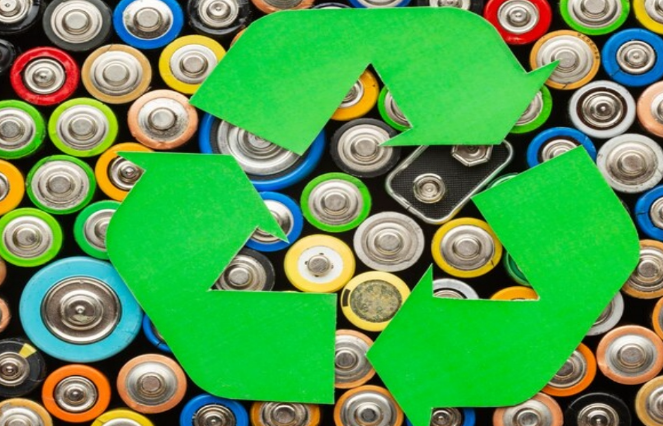Extractants like D2EHPA for nickel, EDTA for calcium, HF for fluorine, and organic acids for lithium enhance metal recovery, achieving efficiencies up to 95%.
Lithium Extractants
Lithium extractants play a crucial role in the hydrometallurgical recovery of lithium. They are generally categorized into three main types:
- Organic Acids: These are the most environmentally friendly option, often chosen for their biodegradability. Commonly used organic acids include citric acid and lactic acid, which are effective in aqueous solutions due to their ability to chelate metal ions.
- Solvating Agents: Agents like dibutyl ether are used to selectively dissolve specific ions, such as lithium. These agents work by forming a complex with lithium ions, which enhances separation from other impurities.
- Ionic Liquids: These are specialized chemicals that remain liquid at low temperatures and can dissolve a variety of substances. Recent advancements have led to the development of ionic liquids specifically tailored to extract lithium from very dilute solutions, enhancing the sustainability of lithium recovery from sources like seawater and geothermal brines.
Extraction Process
The process of lithium extraction using these extractants involves several steps:
- Formation of a Complex: Lithium ions in the source material are brought into contact with the extractant, forming a complex.
- Separation: The complexed lithium is then separated from the rest of the material.
- Recovery: Lithium is recovered from the extractant in a purified form.
To measure the efficiency of this process, the partition coefficient is used, which ideally should be high, indicating a preferential migration of lithium into the extractant phase over other competing ions.
Operational Considerations
When designing and operating lithium extraction processes, several factors must be considered:
- Temperature: Higher temperatures can improve the solubility of lithium but might also lead to precipitate formation or extractant degradation.
- pH Levels: The pH of the solution can affect the stability and efficiency of the extractant.
- Presence of Competing Ions: Other ions in the solution can compete with lithium for the extractant, potentially reducing the efficiency of lithium recovery.

Calcium Extractants
Calcium extractants primarily include chelating agents that form strong complexes with calcium ions, thereby enhancing their extraction from various matrices:
- EDTA (Ethylenediaminetetraacetic Acid): Known for its high affinity for calcium ions, with a stability constant of about 10.7, indicating a robust binding capability that facilitates effective calcium separation.
- DTPA (Diethylenetriaminepentaacetic Acid): Similar to EDTA, DTPA is another potent chelating agent, used when a stronger binding is required, particularly in complex matrices where multiple metal ions are present.
Detailed Extraction Techniques
The extraction process using these extractants can be described in a step-by-step approach:
- Formation of the Complex: Calcium ions in the solution react with the extractant (EDTA or DTPA) to form a stable complex.
- Separation: Once the complex is formed, it can be separated from the solution using techniques such as solvent extraction or precipitation, depending on the downstream processing requirements.
- Recovery: The final step involves recovering calcium in a purified form, either by breaking the complex under controlled conditions or by further purification processes.
Optimization Strategies
To maximize the efficiency of the calcium extraction process:
- pH Adjustment: Lowering the pH can increase the stability of the calcium-extractant complex, thereby enhancing the extraction efficiency.
- Temperature Control: Higher temperatures can accelerate the kinetics of the extraction process but need to be carefully managed to prevent extractant degradation.
Industrial Applications
Calcium extractants find applications in a range of industries, each with specific requirements and challenges:
- Mining: Used to recover calcium from mineral ores in a more environmentally friendly manner compared to traditional methods.
- Wastewater Treatment: Essential for removing calcium and other heavy metals from industrial effluents to meet environmental compliance.
- Pharmaceutical and Food Manufacturing: Critical in ensuring the purity and quality of calcium used as an additive or intermediate in various formulations.
Fluorine Extractants
Fluorine extractants are vital in industries requiring precise handling of fluorine due to its reactive nature:
- Hydrofluoric Acid (HF): Widely used due to its ability to react with silicate minerals, making it indispensable in applications such as glass etching and semiconductor cleaning.
- Organofluorine Compounds: These compounds are used to either sequester fluorine in non-aqueous environments or facilitate its removal from complex mixtures. Their design typically focuses on stability and reactivity tailored to specific fluorine sources.
Detailed Extraction Methods
A step-by-step breakdown of typical fluorine extraction includes:
- Leaching: The process often starts with leaching, where a fluorine-containing material is treated with an extractant such as hydrofluoric acid to dissolve fluorine or convert it into a soluble form.
- Separation: Following leaching, the solution is processed to separate the fluorine-extractant complex from the bulk material, often through methods like precipitation or solvent extraction.
- Recovery: The final step involves recovering fluorine from the extractant, typically by breaking down the complex under controlled conditions to release pure fluorine.
Process Optimization
Optimizing the extraction process involves several crucial considerations:
- Temperature Control: Higher temperatures can accelerate the extraction reactions but may also lead to increased volatility or degradation of fluorine compounds.
- pH Adjustment: Modifying the pH can enhance the reactivity of the extractant or stabilize the fluorine compound during the process.
- Extractant Concentration: The concentration of the extractant needs to be carefully managed to balance between efficiency and cost, ensuring minimal extractant consumption while maximizing fluorine recovery.
Industrial Applications
Fluorine extractants are employed in various sectors, each with distinct needs:
- Pharmaceuticals: For the synthesis of fluorinated compounds, which are common in many drugs and agricultural chemicals.
- Glass Manufacturing: Essential in the etching and polishing processes that require precise manipulation of fluorine to achieve desired properties.
- Environmental Management: Used in the remediation of fluorine-contaminated sites, where fluorine needs to be effectively removed from soils and waterways.

Nickel Extractants
Nickel extractants are crucial in the metallurgical field for extracting nickel from ores and further purifying it for use:
- Organophosphoric Acids: D2EHPA (Di-2-ethylhexyl phosphoric acid) is one of the most effective organophosphoric acids used due to its high affinity for nickel ions. It can achieve extraction efficiencies over 90%, making it ideal for high-grade nickel ores.
- Oximes (LIX Reagents): These are specialized reagents designed for the solvent extraction of nickel. They are preferred for their efficiency in selectively recovering nickel from mixed metal solutions.
Detailed Extraction Process
The nickel extraction process involves several well-defined steps:
- Leaching: Nickel ores are treated with an acidic solution to dissolve nickel and other metals into the aqueous phase.
- Solvent Extraction: An organophosphoric acid or oxime reagent is then introduced to the leachate. The extractant selectively binds with nickel ions, forming a complex.
- Phase Separation: The nickel-extractant complex is then separated from the aqueous phase, typically through a settling and decanting process.
- Nickel Recovery: The final step involves stripping nickel from the extractant to produce purified nickel, which is then processed into forms suitable for industrial use.
Optimization Techniques
Effective optimization strategies for nickel extraction include:
- pH Adjustment: Controlling the pH of the leaching solution is critical. A slightly acidic pH is optimal for maximizing nickel extraction while minimizing the extraction of unwanted metals.
- Extractant Concentration: Adjusting the concentration of the extractant ensures an efficient extraction process, balancing between cost and performance.
Industrial Applications
Nickel extractants have a wide range of applications across various industries:
- Stainless Steel Manufacturing: Nickel is a key component in stainless steel, and its purity is crucial for achieving desired alloy characteristics.
- Battery Production: High-purity nickel is essential in the manufacturing of batteries, particularly for electric vehicles, where nickel increases the energy density of lithium-ion batteries.
- Catalysts: Nickel catalysts are used in hydrogenation reactions in the chemical industry, requiring high-purity nickel for efficiency and longevity.
